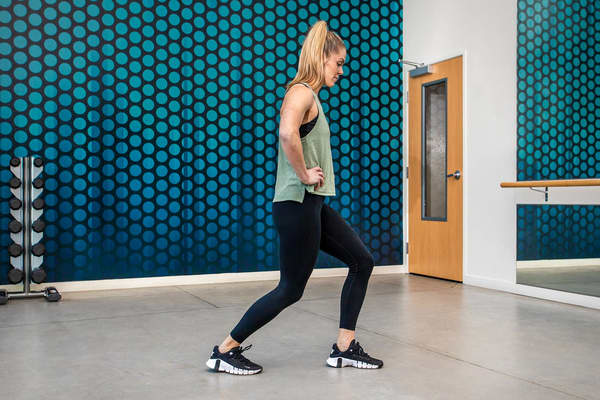Are Free Weights Better Than Weight Machines?
Sport & Activity
The question is, which one will enhance your workout the most? Here, we identify the pros and cons of each.

When you start a strength-training routine, you may find yourself wondering which is better—free weights or weight machines? The truth is, they both have pros and cons. This means the best one for you may depend on your situation and fitness goals.
Whatever method you choose, lifting weights helps you get stronger. Building muscle through resistance training helps to increase muscle mass, body strength, endurance and cardiovascular fitness. This can help you perform better as an athlete and in your daily endeavours.
What Is the Difference Between Machines and Free Weights?
Weight Machines
This type of machine you see at the gym is used for resistance training, specifically one that's stabilised. In a seated position, you isolate one muscle group to move weight in a controlled path.
Examples of weight machines:
- Smith machine
- Lat-pulldown machine
- Leg-extension machine
- Cable machine (e.g. cable biceps, triceps pushdown)
- Rowing machine
- Chest-press machine
Free Weights
Free weights offer resistance that isn't fixed. They can be picked up. They work against gravity, relying on your body strength to keep them upright. You can move free weights in any direction—laterally, vertically, diagonally—and can play around with unique movement paths, such as bending or rotation.
Examples of free weights:
- Dumbbells
- Kettlebells
- Barbell
- Sandbags
- Medicine balls
4 Benefits of Using Weight Machines
1.They set you up for a stable position
If you're new to strength training or trying an exercise for the first time, using a weight machine might be the best place to start. Why? Because you'll be in a fixed position with a fixed movement path, you'll likely be more stable as you move through the movement path, which can become more natural to you when you repeat that movement pattern in other exercises.
2.They're a bit more time efficient
Compare the time difference between setting up a heavy Smith-machine squat to a heavy barbell squat on a squat rack. You're going to be spending a lot more time setting up and racking a barbell, re-weighting it, clearing it away and so on than you will on a Smith machine.
If you're extra short on time and even a Smith machine is too time consuming for you, you can try a leg-press machine. This mirrors a similar movement pattern and works the same muscles as a squat, and all you have to do to increase the weight is adjust a lever.3.They may reduce the risk of injury
As machines use a fixed path of movement, they may encourage good form, which in turn may reduce your susceptibility to injury. If you try to do free-weight lat raises with dumbbells that are too heavy, the rest of your body will try to compensate for the movement to fulfil the path of movement, which may cause injury. If you're doing this on a machine, your body is in a fixed position and unable to compensate.
4.They may be more beginner friendly
Exercises on machines can be learned easily, due to the fixed movement path and stabilised position. This reduces the room for error, which can be a confidence builder for resistance training beginners.
4 Benefits of Using Free Weights
1.They're a bit more versatile
With a simple set of dumbbells, there are a number of free-weight exercises you can do: deadlifts, bench press, squat, overhead press, weighted crunches, etc. You can do all of these with the same free weight.
2.They may be less intimidating to use
Some people find gym environments intimidating, particularly when faced with a complex-looking machine or a packed weights room. With free weights, you can grab a pair of dumbbells and have a complete total-body resistance workout without having to move around, switch weights or wait for equipment.
3.You'll get maximal muscle activation
When you use machines, the muscle you're targeting is isolated. For example, if you do an overhead press using a machine, you're isolating your shoulders, because the plane of motion is controlled and your body is stable.
If you do overhead press standing using a barbell, you have to focus on balance. Your core is engaged and your body is stable, so more muscles are recruited. Each one has benefits, but more often than not, recruiting more muscles to stabilise a movement has major benefits for full-body strength building.4.They allow you to follow a natural movement pattern
Machines follow a controlled plane of motion, which is great for isolating muscles and improving the safety of the machine. However, sometimes isolation exercises can lead to injuries, as they promote an unnatural movement pattern. For example, how often in real life do you do a lying hamstring curl?
Free weights are more likely to help you follow a natural movement pattern or realistic range of motion, and replicate real-life movements.
Machines vs Free Weights: Which One Is the Best Workout for You?
Still can't decide? Here's the breakdown of the pros and cons of weight machines in comparison to free weights.
Machines
Pros
- Give a more stable position
- May cause potentially fewer injuries
- Can isolate specific muscles
- Offer a fixed path of movement to prevent poor form
- Are time efficient and easy to re-weight
- Are easy to use
Cons
- Create unnatural movement patterns for some of the isolation exercises
- Don't always account for different body types
- Are less versatile
- May cause muscular imbalances
- Prompt a lower heart rate than free weights
- May not offer high enough weights for advanced lifters
Free weights
Pros
- Provide a less stable position to improve stability function
- Engage more muscle groups during one exercise
- Follow natural movement patterns (think squatting and overhead press)
- Offer versatility
- Give a typically higher heart rate because more muscles are recruited
- Can be done at home
Cons
- May cause higher rates of injury
- Offer less time under tension as you're working with gravity in some lifts
- Are more likely to encourage poor form
- May require a spotter
- Are time consuming to re-weight
- Are harder for beginners to learn
Bottom Line: Both free weights and weight machines have pros and cons. Ideally, a workout routine that combines free weights and machines is optimal for achieving your fitness goals. However, whatever you have access to is what's most important, as each type of strength training can provide benefits to your overall health.
Need more tips? Consider downloading the Nike Training Club App!















